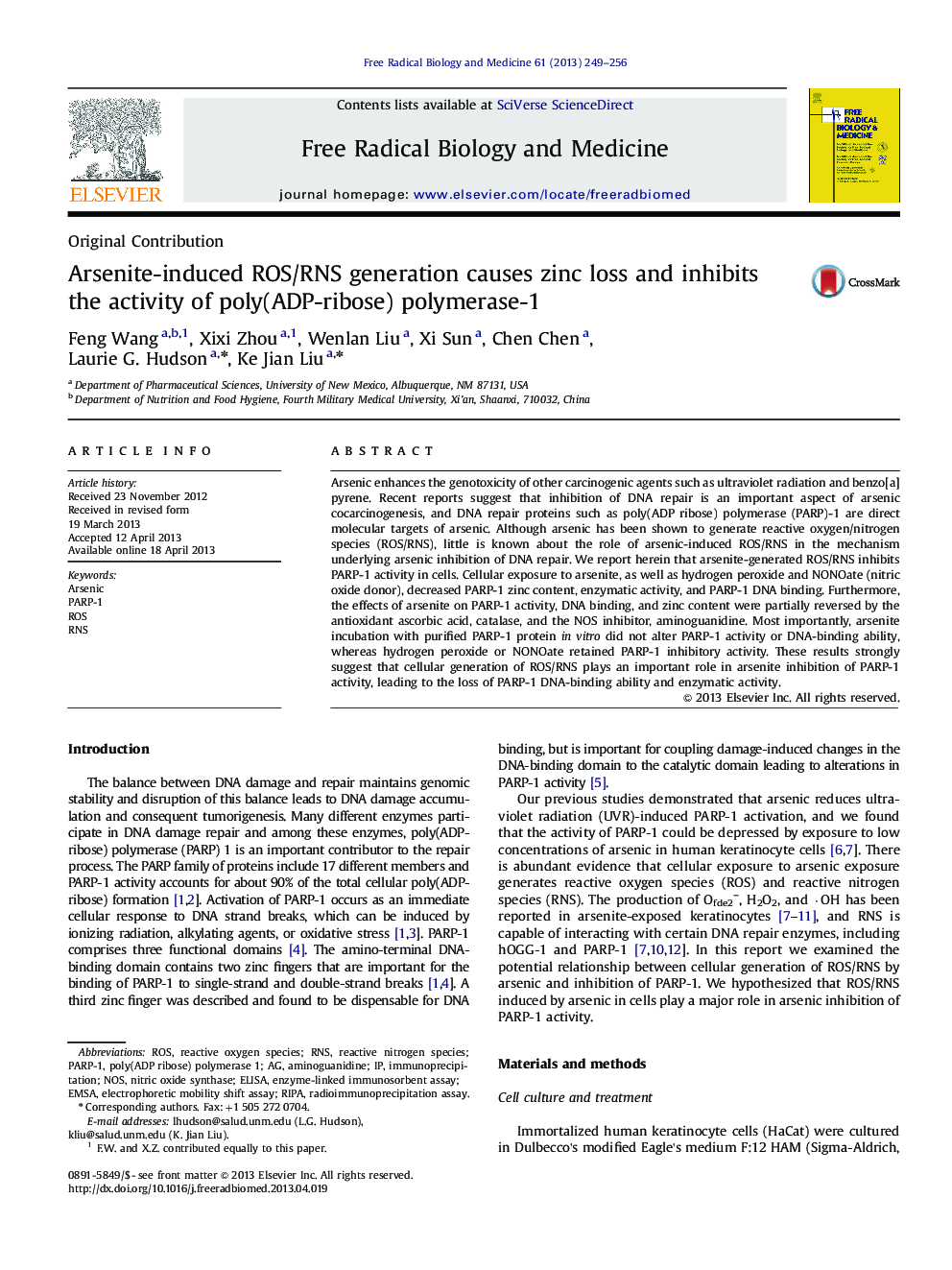| کد مقاله | کد نشریه | سال انتشار | مقاله انگلیسی | نسخه تمام متن |
|---|---|---|---|---|
| 8271380 | 1534981 | 2013 | 8 صفحه PDF | دانلود رایگان |
عنوان انگلیسی مقاله ISI
Arsenite-induced ROS/RNS generation causes zinc loss and inhibits the activity of poly(ADP-ribose) polymerase-1
دانلود مقاله + سفارش ترجمه
دانلود مقاله ISI انگلیسی
رایگان برای ایرانیان
کلمات کلیدی
PARP-1NOSRNSRIPAROS - ROSArsenic - آرسنیکElectrophoretic mobility shift assay - آزمون تحرک تحرک الکتروفورزAminoguanidine - آمینوگوئیدینImmunoprecipitation - تخریب ایمنیELISA - تست الیزاEnzyme-linked immunosorbent assay - تست الیزاradioimmunoprecipitation assay - سنجش radioimmunoprecipitationEMSA یا electrophoretic mobility shift assay - سنجش تغییر تحرک الکتروفورتیکnitric oxide synthase - نیتریک اکسید سنتازreactive nitrogen species - گونه های واکنش پذیر نیتروژنReactive oxygen species - گونههای فعال اکسیژن
موضوعات مرتبط
علوم زیستی و بیوفناوری
بیوشیمی، ژنتیک و زیست شناسی مولکولی
سالمندی
پیش نمایش صفحه اول مقاله

چکیده انگلیسی
Arsenic enhances the genotoxicity of other carcinogenic agents such as ultraviolet radiation and benzo[a]pyrene. Recent reports suggest that inhibition of DNA repair is an important aspect of arsenic cocarcinogenesis, and DNA repair proteins such as poly(ADP ribose) polymerase (PARP)-1 are direct molecular targets of arsenic. Although arsenic has been shown to generate reactive oxygen/nitrogen species (ROS/RNS), little is known about the role of arsenic-induced ROS/RNS in the mechanism underlying arsenic inhibition of DNA repair. We report herein that arsenite-generated ROS/RNS inhibits PARP-1 activity in cells. Cellular exposure to arsenite, as well as hydrogen peroxide and NONOate (nitric oxide donor), decreased PARP-1 zinc content, enzymatic activity, and PARP-1 DNA binding. Furthermore, the effects of arsenite on PARP-1 activity, DNA binding, and zinc content were partially reversed by the antioxidant ascorbic acid, catalase, and the NOS inhibitor, aminoguanidine. Most importantly, arsenite incubation with purified PARP-1 protein in vitro did not alter PARP-1 activity or DNA-binding ability, whereas hydrogen peroxide or NONOate retained PARP-1 inhibitory activity. These results strongly suggest that cellular generation of ROS/RNS plays an important role in arsenite inhibition of PARP-1 activity, leading to the loss of PARP-1 DNA-binding ability and enzymatic activity.
ناشر
Database: Elsevier - ScienceDirect (ساینس دایرکت)
Journal: Free Radical Biology and Medicine - Volume 61, August 2013, Pages 249-256
Journal: Free Radical Biology and Medicine - Volume 61, August 2013, Pages 249-256
نویسندگان
Feng Wang, Xixi Zhou, Wenlan Liu, Xi Sun, Chen Chen, Laurie G. Hudson, Ke Jian Liu,